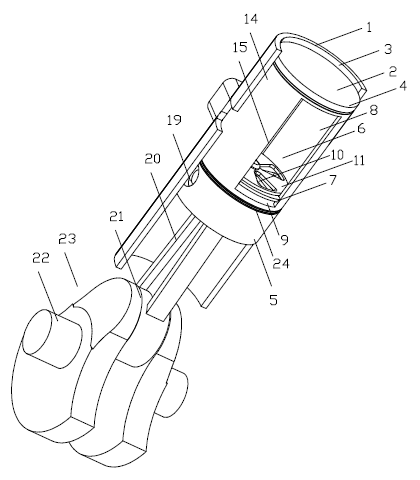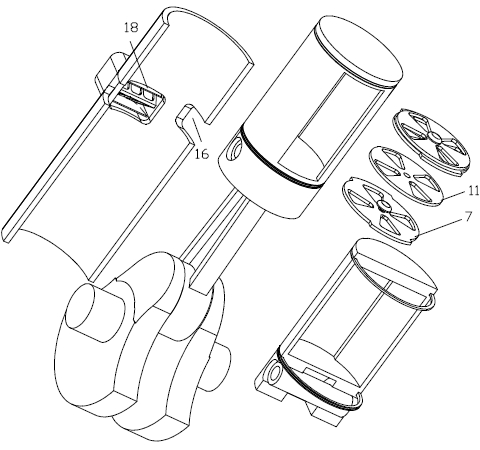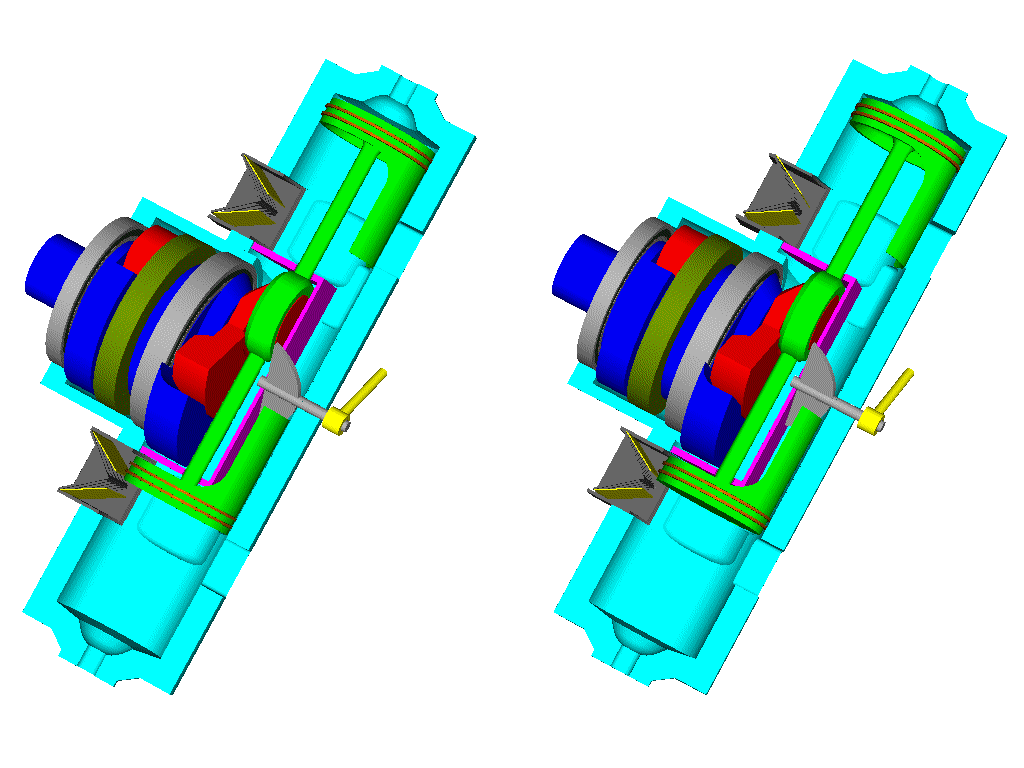Hello Kelpecross.
You write:
"You could probably get the same effect by having a connecting pipe and butterfly valve between the crankcases of a twin-cylinder two-stroke engine."
Yes and No.
I think you mean this:

The complete patent is at
http://www.pattakon..../CITS_USPTO.gif Please read the paragraph at line 57 of page6.
The Australian company CTIS (at
http://www.citsengine.com.au/ ) has manufactured a twin-cylinder prototype and is now looking for some $4.0m to proceed.
No, “you cannot get the same effect by having a connecting pipe and butterfly valve between the crankcases of a twin-cylinder two-stroke engine”.
The following plot shows the variation of the total volume underside the two pistons of a paired CITS engine with the bypass valve wide open:
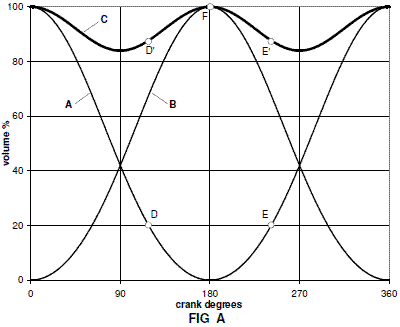
Quote from
http://www.pattakon....takonPatTwo.htm
"Comparison with the "paired cylinders" approach
In the Fig A the curve A is the variation vs. the crankshaft angle of the volume underside the first piston of a paired cylinder 2-stroke (according the US8,683,964 patent), the curve B is the variation vs. the crankshaft angle of the volume underside the second piston of the paired cylinder 2-stroke.
Each of the two pistons is connected to a conventional crankshaft by a conventional connecting rod. The curve C is the sum of the variations of the volumes underside the two pistons vs. the crankshaft angle (i.e. it is the sum of the A and B curves).
With the "connecting rod to stroke ratio" being 1.6, the total volume (curve C) varies more than 16%.
For smaller "connecting rod to stroke" ratios, the variation of the C curve is wider.
The point D on the A curve is where the first piston opens its respective transfer ports.
The point D' on the C curve shows the volume of the combined space underside the two piston crowns the moment the first piston opens its transfer ports.
As the first piston approaches its BDC, the combined space increases, causing some 15% of the burnt gas from inside the first cylinder to return to the combined space (case with wide open bypass passage), contaminating and heating the fresh air or mixture (an open transfer port provides substantially smaller resistance in the motion of a gas than a reed valve).
After the point F at the TDC of the first piston, the volume of the combined space underside the two piston crowns decreases, forcing some 15% of the trapped air or mixture to pass the transfer ports and get into the first cylinder.
After 180 crankshaft degrees the same happen in the second cylinder.
That is, at low-medium revs with the bypass valve wide (or completely) open, some 30% of the one cylinder capacity enters, per crank rotation, into the two cylinders, and some 30% of the residual gas in the one cylinder contaminates the air of mixture in the combined space underside the two piston crowns.
This is an undesired limitation for the idle and the light load operation of the engine because it defines the quality and the revs of the idling; worse even, it makes necessary additional load control means (other than the bypass valve) for the idle and the light load operation, canceling advantages like the reduced pumping loss, the simplicity, the compactness, the low cost."
End of quote
By the way, it is interesting to compare the variation of the total volume of the two-cylinder CITS engine with the variation of the volume underside the piston of a conventional single cylinder 2-stroke:
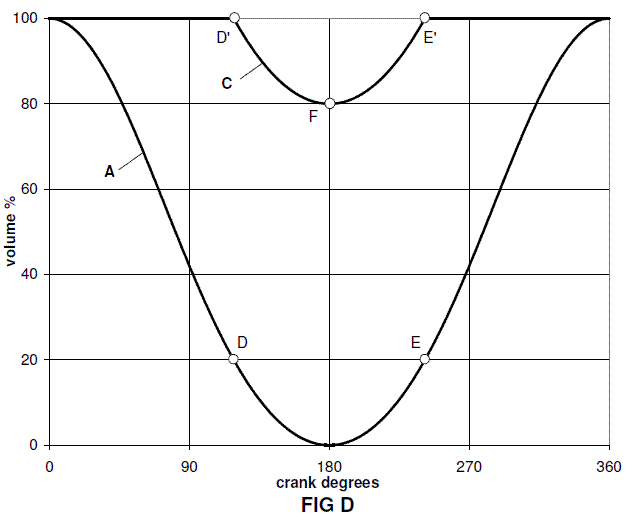
The width of the variation is more-or-less the same.
The timing of the variation is different:
in the one case the increase of the volume under the piston comes first, in the other case the decrease of the volume under the piston comes first.
In the case of the single-cylinder PatTwo, the volume of the combined space underside the piston is constant, as in the Fig C at
http://www.pattakon....takonPatTwo.htm
The PatTwo is a substantial and necessary improvement of the CITS “paired-cylinders” system.
”Substantial and necessary improvement” because with less it achieves more:
it needs not a second (or paired) cylinder,
it keeps the volume of the combined space constant,
it needs not an “external”/additional throttle for the control of the engine at light load / idling, etc.
Thanks
Manolis Pattakos
